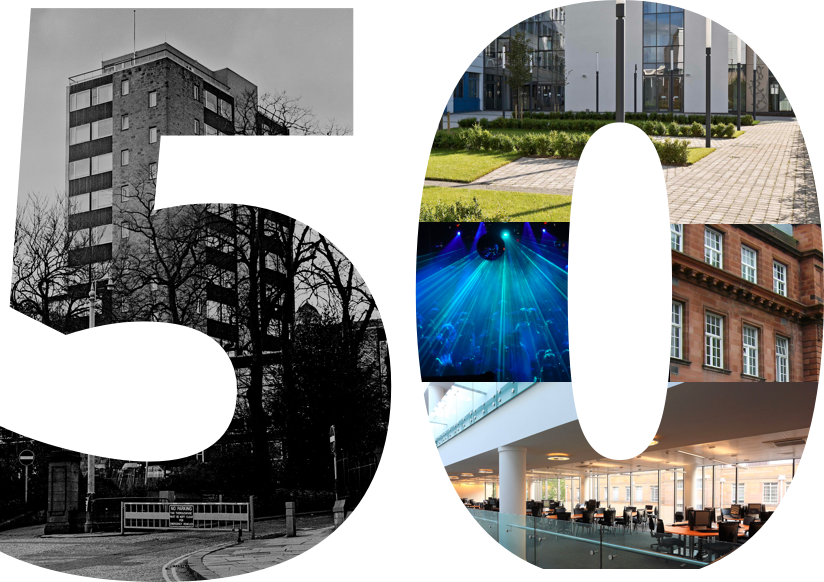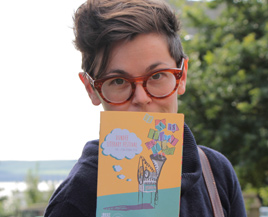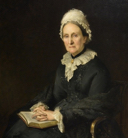
-
Celebrations begin to commemorate 50 years of the University of Dundee
2017 -
The University of Dundee becomes a fully independent institution under the terms of the Royal Charter.
1967 -
Ordinances issued in 1897 made University College form part of St Andrews. and establish a Faculty of Medicine.
1897 -
The Deed formally creating University College Dundee was signed by founders Miss Mary Ann Baxter and her cousin Dr John Boyd Baxter.
1881
Scientific instruments
-
date
Fri, 06 Oct 2017
-
Running Time
00:04:37
Dundee Repertory Theatre is much more than a neighbour to the University of Dundee.
Episode Transcript
Research is the lifeblood of any academic institution. The University of Dundee is recognised as a leader in research across its many disciplines, but that work depends on the tools to do the job.
Every research breakthrough has a debt of gratitude to those who pioneered scientific instruments. Many of Dundee’s scientific and social innovators are now given their place on Discovery Walk, part of the new Waterfront development. Among them is George Lowdon.
Born in 1825, Lowdon was drawn to science at a young age, in part due to his father who was an accomplished mechanic. Like many Dundonians of his generation, the young Lowdon first found work in a flax factory, but his desire to design and create was strong and in 1849, he left to open an optician’s business. His father had already been successful in creating lenses and his move into this area coincided with something of an explosion in photography. Through Lord Kinnaird, a great patron of the new art form, he was introduced to David Brewster and manufactured the new stereoscope. Lowdon also went on to import a daguerreotype from Paris, being the first to show it in Dundee.
He is perhaps best known for creating a jumbo microscope, standing four feet high and featuring a photographic slide for Fox Talbot paper, but he also manufactured telescopes and was integral in further developing the stereoscope while patenting the Eclipse, the first fixed-focus folding pocket camera. Another local pioneer of photography, Peter Feathers, had his sight sets on the moving image by the late 1890s.
His Feathers Animated Panorama showed Dundonians their own city on the screen. Perhaps his best known work is the Railway Ride over the Tay Bridge from 1897. Shot from the front of the engine, the steam train pulls away from Wormit station and passes south bound trains while crossing the Tay rail bridge., crossing the bridge. Apart from the innovators that have allowed us to see and record experiences, Dundee has a strong legacy of medical innovations.
The name Allardyce is still familiar as a manufacturer of medical equipment and aids. The firm was founded by master saddler Charles Allardyce in 1890, at that time with two others – cutlery maker William Pettie and an entrepreneur called Whitelaw. They produced surgical instruments, successfully, but as happens in business there was a parting of the ways with Allardyce going it alone around 1901, in direct competition with Pettie & Whitelaw who set up on the opposite side of Nethergate. When Whitelaw left the two firms carried on.
The Great War created a demand for their artificial limbs and Pettie continued in this area until the company closed in 1958. Allardyce broadened his range, supplying medical equipment to the whole of Scotland and now specialising in wheelchairs, orthopaedic furniture, and hearing aids.
The innovation continues at the University, concentrating on discoveries that will simply make life better.
The recovery time from open surgery has always been a problem for the patient, but also for medical professionals and the added care required. So the development of minimal access surgery has been transformative and Dundee played a significant role.Professor Sir Alfred Cuschieri is recognised as a pioneer in the research of laparoscopic surgery, sometimes called keyhole surgery. The research to test whether open surgery could be replaced with these less invasive procedures, required laparoscopic instrumentation of course. It also required ergonomics studies, training studies and more than 75 clinical studies. The techniques are now used globally and are not only transforming but in many cases saving lives.
Peggy Hughes

Peggy manages Literary Dundee, a University of Dundee initiative that celebrates books, reading andwriting. Literary Dundee was included in the List Magazine's Hot 100, their annual celebration of thefigures who've contributed most to the cultural landscape during the year. She has worked for theUniversity since 2013 and before that worked with literary organisations such as the Scottish PoetryLibrary and the Edinburgh UNESCO City of Literature Trust. Peggy works with books in her spare timetoo - interviewing authors at events and festivals, talking about books on the radio and other platforms.She sits on the board of the Craigmillar Literacy Trust and Highlight Arts, and when not reading or talkingabout books, enjoys walks, Scrabble, tweed, singing tunelessly, and cake. Peggy was listed at number 51in the Courier's Impact 100 2016 (their 'annual review of the people who have done the most - good orbad - to affect life in Courier country') for services to Dundee's cultural life.
-
Celebrations begin to commemorate 50 years of the University of Dundee
2017 -
The University of Dundee becomes a fully independent institution under the terms of the Royal Charter.
 1967
1967 -
Ordinances issued in 1897 made University College form part of St Andrews. and establish a Faculty of Medicine.
1897 -
The Deed formally creating University College Dundee was signed by founders Miss Mary Ann Baxter and her cousin Dr John Boyd Baxter.
 1881
1881